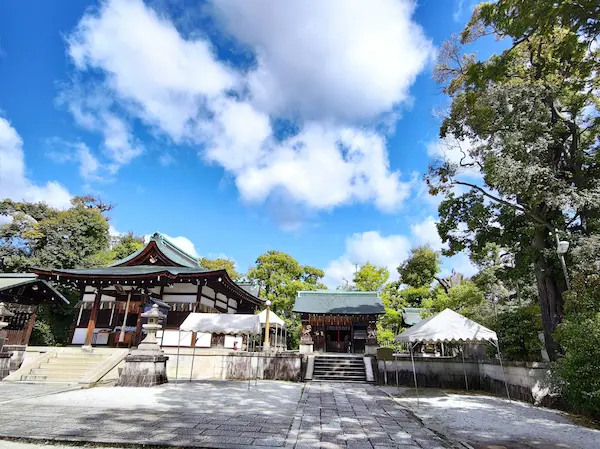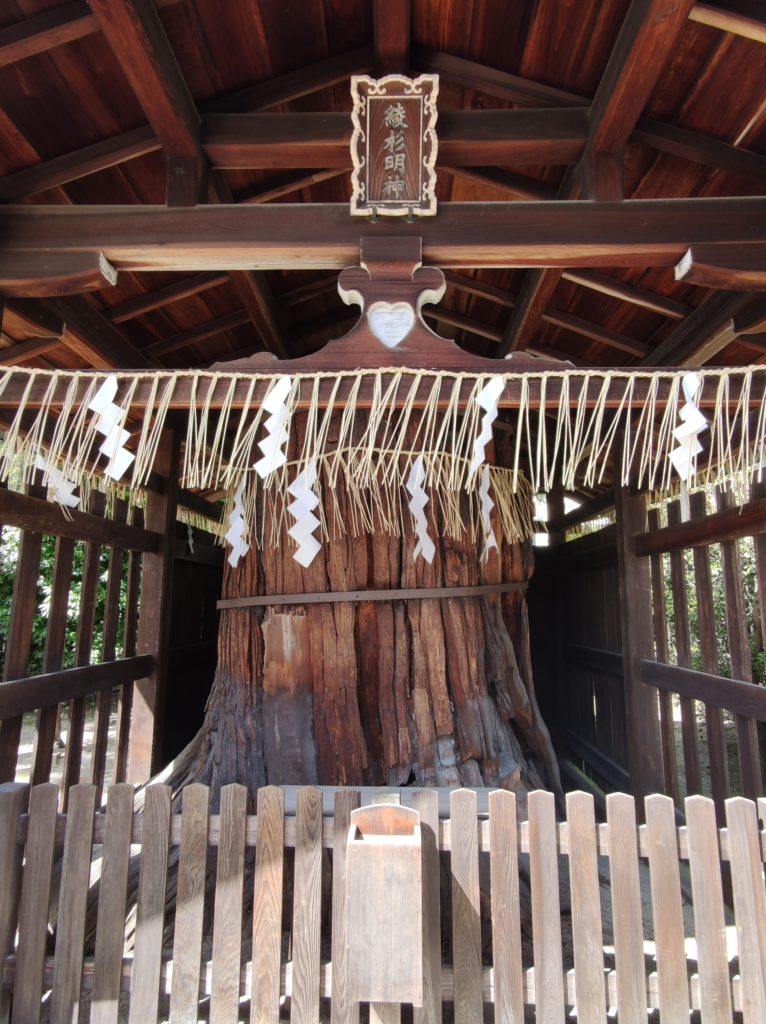From Kinkakuji Temple, go along Kinukake-no-michi a little toward Ryoanji Temple, and from there go south on Nishioji-dori. There you will find the Shikichi Shrine, commonly known as Wara Tenjin. The bus stop is also called “Waratenjin-mae,” so the common name is probably more popular among residents.
The deity of the shrine is Konohana-no-sakuyahime no Mikoto (Princess Konohana), who helps easy childbirth. The left side of the photo is the main shrine, and the right side is the “Rokusho Shrine,” which enshrines the six shrines of Ise, Iwashimizu, Kamo, Matsuo, Inari, and Kasuga together.

Within the precincts of the Waratenjin is the Aya Sugi Myojin. The Aya Sugi is a large cedar. But it was broken from the base by a storm in the Meiji era and the remaining stump was preserved and enshrined as the Aya cedar Myojin. Motosuke Kiyohara, the father of Seishonagon and one of the Thirty-six Poets, mentioned the ceder in his poem in the Shui waka-shu (collection of waka poems).

Nearby spots of Wara Tenjin Shrine
Both Kinkakuji Temple and Ryoanji Temple are UNESCO World Heritage sites.
Kitano Tenmangu Shrine and Hirano Jinja Shrine are famous for plum trees and cherry trees respectively. So you should visit these shrines in Spring.
Related articles:
[…] deity of Wara Tenjin Shrine is Konohana-no-sakuyahime no Mikoto (Princess Konohana), who helps easy […]